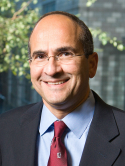What is the optimum timing of postmastectomy radiotherapy in two-stage prosthetic reconstruction: Radiation to the tissue expander or permanent implant? Journal Article
| Authors: | Cordeiro, P. G.; Albornoz, C. R.; McCormick, B.; Hudis, C. A.; Hu, Q.; Heerdt, A.; Matros, E. |
| Article Title: | What is the optimum timing of postmastectomy radiotherapy in two-stage prosthetic reconstruction: Radiation to the tissue expander or permanent implant? |
| Abstract: | Background: Postmastectomy radiotherapy is increasingly common for patients with advanced breast cancer. The optimal timing and sequence of mastectomy, reconstruction, and radiotherapy remains unresolved for patients choosing immediate two-stage prosthetic reconstruction. Methods: Long-term outcomes were compared for all patients with prosthetic-based reconstruction without radiation, radiation to the tissue expander, or to the permanent implant from 2003 to 2012 performed by the senior author (P.G.C.). Surgeon-evaluated outcomes included reconstructive failure, aesthetic results, and capsular contracture. Odds of failure with radiotherapy at different times were evaluated with logistic regression and Kaplan-Meier analysis. Patient-reported outcomes were assessed using the BREAST-Q. Results: A total of 1486 reconstructions without radiation, 94 reconstructions with tissue expander radiation, and 210 reconstructions with permanent implant radiation were included. Six-year predicted failure rates were greater for patients with tissue expander radiation than for patients with permanent implant radiation (32 percent versus 16.4 percent; p < 0.01). Patients undergoing radiation to the tissue expander had a greater proportion of very good to excellent aesthetic results compared to patients with permanent implant radiation (75.0 percent versus 67.6 percent; p < 0.01) and lower rates of grade IV capsular contracture (p < 0.01). BREAST-Q scores were similar for patients with the different radiation timings. Conclusions: Although the risk of reconstructive failure is significantly higher for patients with tissue expander radiation compared to patients with permanent implant radiation, the aesthetic results and capsular contracture rates are slightly better. Patient reported outcomes do not differ between patients with tissue expander or permanent implant radiation. © 2015 by the American Society of Plastic Surgeons. |
| Keywords: | treatment outcome; aged; middle aged; retrospective studies; united states; adjuvant therapy; comparative study; radiotherapy, adjuvant; follow up; follow-up studies; cohort studies; mastectomy; logistic models; cohort analysis; odds ratio; pathology; breast neoplasms; retrospective study; tissue expansion devices; radiation response; time; time factors; risk assessment; risk; cancer center; reoperation; predictive value of tests; cancer care facilities; new york city; chi-square distribution; esthetics; breast implants; kaplan meier method; analysis of variance; statistical model; predictive value; breast augmentation; chi square distribution; adverse effects; tissue expander; breast implantation; prosthesis failure; kaplan-meier estimate; procedures; breast implant; humans; human; female |
| Journal Title: | Plastic and Reconstructive Surgery |
| Volume: | 135 |
| Issue: | 6 |
| ISSN: | 0032-1052 |
| Publisher: | Lippincott Williams & Wilkins |
| Date Published: | 2015-06-01 |
| Start Page: | 1509 |
| End Page: | 1517 |
| Language: | English |
| DOI: | 10.1097/prs.0000000000001278 |
| PUBMED: | 25742523 |
| PROVIDER: | scopus |
| PMCID: | PMC5004350 |
| DOI/URL: | |
| Notes: | Export Date: 2 September 2015 -- Source: Scopus |
Altmetric
Citation Impact
BMJ Impact Analytics
Related MSK Work









